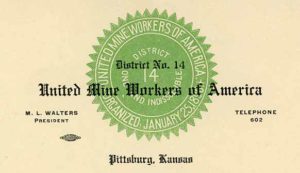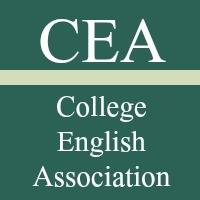
In my Digital Humanities class, students collaborated with PSU’s Axe Library to digitize the Hearl Maxwell Collection, available at tinyurl.com/hmaxwell. As a result, the same students built digital exhibits exploring working-class rhetoric, local media’s depictions of unions, and disability rhetoric using items from the archive. Their exhibits are available at tinyurl.com/pittscalar. In other service-oriented classes, my students have worked with non-profits and the city of Pittsburg to revise documents for usability and to produce video public service announcements, such as this PSA for Pittsburg State’s Writing Center: tinyurl.com/psupsa. In my Digital Literacies and New Media Writing classes, students explore the dynamics of networked environments and online spaces by examining their social, cultural, political, legal, ethical, and rhetorical dimensions. The final Digital Literacies project asks students to use iMovie and Garage Band iPad apps (using iPads provided by the university) as well as the Weebly website builder to create a multimodal text that takes advantage of the affordances of the digital medium and of the elements of visual rhetoric to advance an argument about a community issue.
Because of my experience in digital literacies, I serve as director of the English Program’s social media, including Facebook, Twitter, and web pages. Serving as the editor of The CEA Forum, an online and peer-reviewed journal devoted to the study of pedagogy, has provided me with first-hand experience with digital editing procedures. I have also received both a PSU Summer Teaching Innovation Grant to create an online Digital Humanities certificate program and scholarships to attend the 2015 Digital Humanities Summer Institute at the University of Victoria.
Selected Digital Literacies Sample Syllabi and Assignments
English 875: “New Media Writing.” (PDF)
This face-to-face course examines the emerging practices of writing in digital environments such as social media, video games, web sites, mobile apps, and augmented reality.
This course should help you achieve the following goals:
Rhetorical Knowledge
- Students identify varied rhetorical situations calling for a wide range of responses informed by context and theory.
- Students evaluate the appropriateness of rhetorical choices in light of anticipated consequences.
Process and Collaborative Textual Evaluation
- Students demonstrate respectful negotiating behaviors during collaborative textual production and evaluation (listening attentively, airing all viewpoints, valuing difference, coming to consensus or dissensus, dividing labor fairly, balancing competing agendas, expectations, and values).
Craft & Editing
- Students consider, apply, and control stylistic options (prose style, figurative language, voice, register, tone, word choice, etc.); correctness in syntax, grammar, usage, punctuation, mechanics, and spelling; coherence and cohesion; and the organization of their texts appropriate to the rhetorical situation.
Textual Production & Delivery
- Students identify and evaluate options for genre, medium, design, circulation, and delivery.
Reflective Learning
- Students consciously synthesize and integrate insights from one project into another.
Sample Assignment: Final Project Assignment (PDF)
English 557/757: “Topics in English— Digital Humanities.” (PDF)
Link to Hearl Maxwell Collection Archive
Digital Humanities (DH) is an interdisciplinary approach to teaching and research that uses the affordances of digital technology to create knowledge. The output from a DH project may take many forms. You may present research in a digital venue, such as an interactive multimedia website, wiki, blog, or video. Someone else with expertise in computer programming may create a software application that will analyze large corpuses of text for theme or style. Yet another scholar may produce a digital scholarly edition of a book or build a database for exploring typically difficult-to-access documents in a library’s archive. Other projects often use text mining tools, such as Voyant (http://voyant-tools.org), to perform, for example, a “distant reading” of every mystery novel published in the nineteenth century. These tools allow an individual to examine large bodies of text, and this method contrasts with the close reading approach taken in many literature classes. The possibilities for innovative work are exciting and endless.
Sample Assignment: Digital Exhibit Final Assignment (PDF)
English 576/776: “Topics in Writing— Digital Literacies.” (PDF)
In this face-to-face course, we will be exploring the dynamics of networked environments and digital spaces by examining their social, cultural, political, legal, ethical, and rhetorical dimensions. We will consider the connections between all of these dimensions throughout the course—at the center of which will be two major projects: one on Digital Writing and one on Digital Humanities. Our reading of William Gibson’s Pattern Recognition will serve as an example of popular culture’s engagement with digital environments and will enable us both to practice our digital literacy and to explore the obligations of that literacy (by investigating the legal, political, social, and rhetorical questions raised in the novel). Other course readings will address past and current hypertext theory, legal and political debates over copyright and distribution, multimedia design guidelines, and new ways of exploring literature. Each component of the course will help us deepen our understanding of what it means to be “digitally literate.”
Sample Assignment: Remediation Assignment (PDF)
Selected Digital Literacies Service
The CEA Forum is a peer-reviewed, online academic journal sponsored by College English Association. I have served as its Editor since 2012.

 Link to The CEA Forum
Link to The CEA Forum